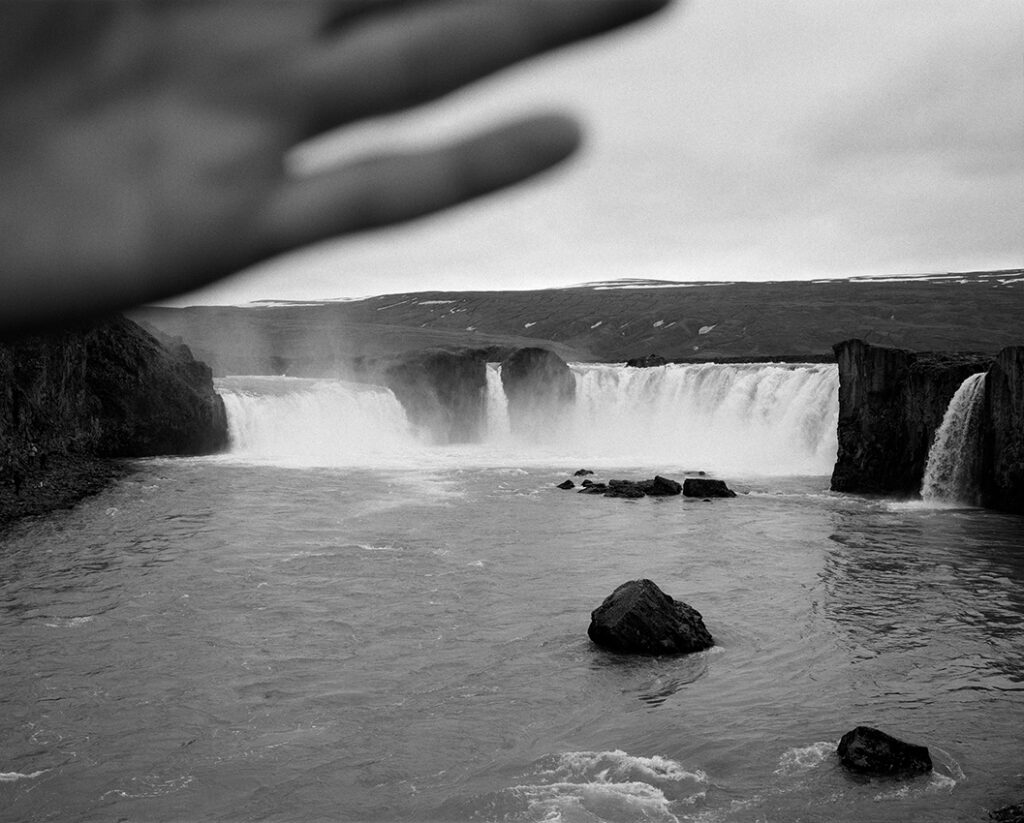
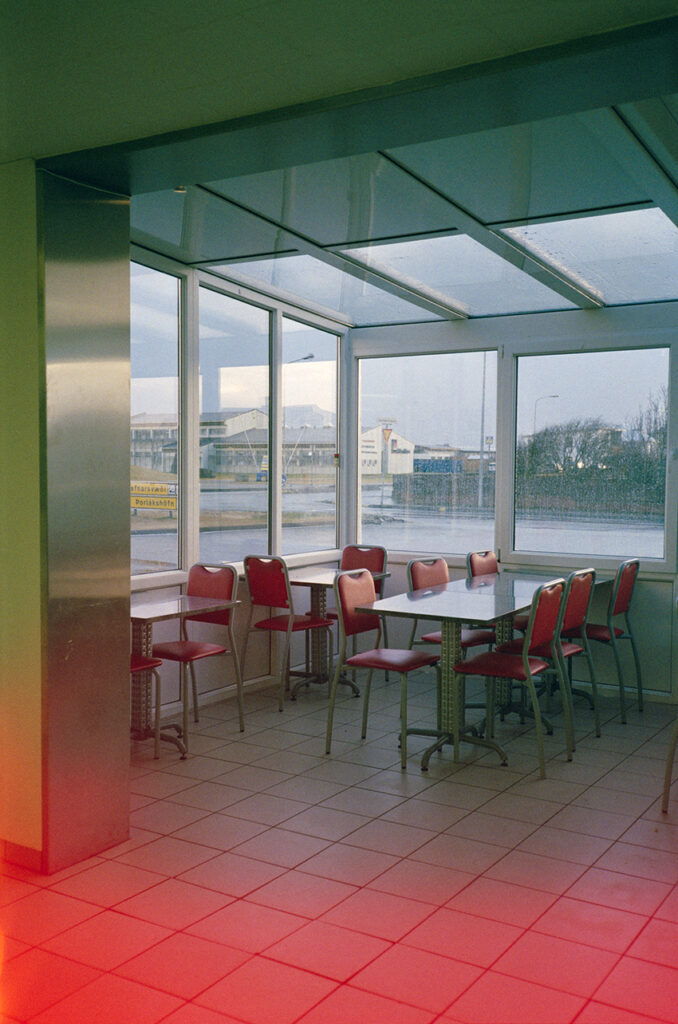
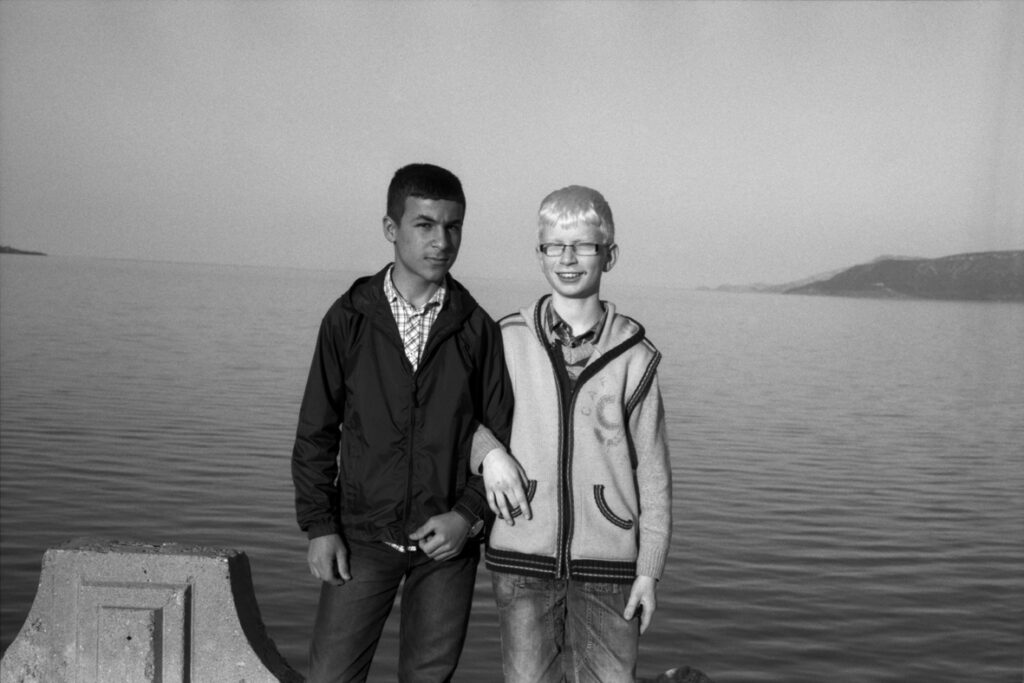
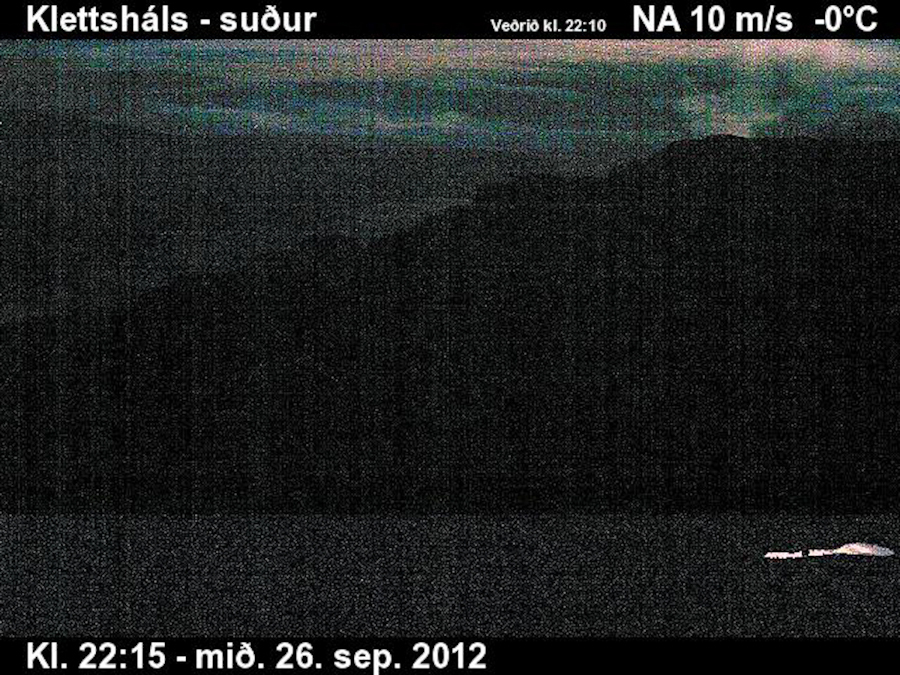
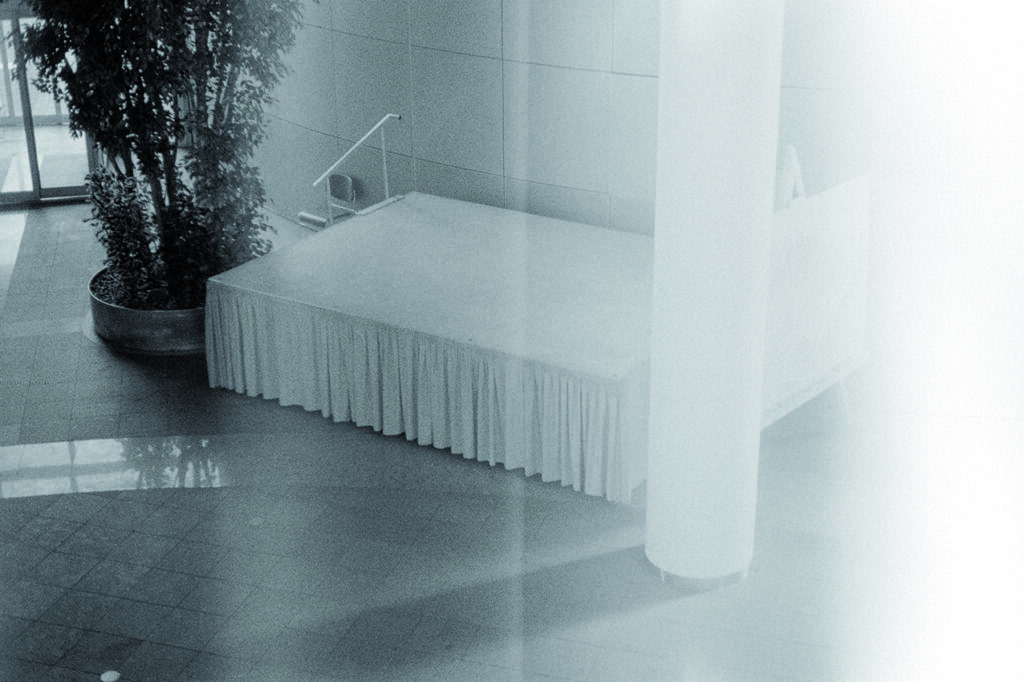

In Celebration of Photographic Errors and Accidents
The looking at of an image is interrupted. The photographic error has placed its veil over the picture, a layer from technology wedged between the photographer’s aim and the picture created. Or between the viewer’s expectations and what they are confronted with. Sometimes the error is not born through technology but is the offspring of the situation, an unexpected turn of events or a human fumble. Whether error or accident, the magical or stupid dust of chance and fluke are sprinkled over the maker’s intentions, revealing the banality and/or beauty of the unexpected. Whether waited for eagerly or evaded at all costs.

These error-veils made from light leaks, over exposure, soft focus, askew horizons, unexpected instances, and fingers hovering in front of the lens, amongst infinite other occurrences, belong distinctly to photography. Thus referring to the medium and generating awareness of what is being looked at: a photograph. Made by someone, recording something. They act as a reminder of the non-objective view of the camera.
Photography is a fragile medium. In terms of making, producing, viewing and storing, it is full of fractions of a second, sensitive and fiddly apparatuses, negatives, files and prints. Dust, scratches and fingerprints get in the way at every stop, leaving photographers eternally donning the white gloves, measuring photons and touching up details. This fragility or use of sensitive technology and materials in combination with strong conventions make photography especially prone to chance and accident.
To deem something an error, to point at the wrong, there needs to be an established right. And photography is full of conventions and habits. Some of these conventions are thoroughly documented and delivered to anyone interested in knowing them, through textbooks, teaching, instruction manuals, YouTube tutorials and critique. Other conventions are more difficult to articulate and are more of a subconscious learning through seeing and people echoing aesthetics belonging to their time and culture. Another bar to measure the rightness of a picture could be the image the photographer set out to make, the artistic intent. What did the artist have in mind to create? That is not always what one ends up with, or rather, it is neverexactly what one ends up with.

At first glance errors seem simple to spot. Yet what is considered a flaw is in constant flux and is tricky to define. Relativity reigns supreme when discussing what constitutes an error or accident, the idea of failure slithering out of grasp each time one tries to pin it down. The concepts discussed here are the children of judgment, the error belonging to the technology and the accident resulting from the situation. The devices used to make photographs (capture, distribute, print etc.) might fail to work as expected, especially when in interaction with a human operator, producing an image containing a glitch or flaw. The imperfection of a wet plate emulsion renders a tear streaked likeness, a software fault generates a psychedelic neon-landscape, the same frame is exposed twice splicing together separate moments. Then the situation the photograph is made in may involve an accident, something happening in front of – or behind – the lens unexpectedly. The button is pushed by chance and the instant is recordedunconventionally, a finger is caught between flash and subject enveloping it in a blood-red hue, the subject blinks and looks asleep in the midst of it all.
Whether the photographic error is complete fluke or hoped for with crossed fingers, it enters a new stage when presented to an audience; it is released from the private to the public. Errors, through the interruption they create between subject and viewer, remind the viewer that he or she is looking at a photograph. This is a valuable tool for makers in the world of photography. It is easy to forget that photographs need to be read, experienced with heart and brain, and that they are neither one truth nor an objective simulation of the world. The error distrupts the looking for the viewer, comes up between them and the subject, and asks them to think and interpret. One isreminded of the photographer and his or her agency, the world outside the frame, the three-way interaction between photographer and subject and the apparatus: the act of taking a photograph. This comes as a contrast to the transparent image, where technology and artistic intent become all but invisible because the conventions are followed and therefore the characteristics of the medium and its use are less present.

As mentioned before, what is considered erroneous is in constant flux, depending on the space and time the image and its beholder find themselves in. A technical failure in the 1910’s had become new photographyby the 1930’s, such as Jaques-Henri Lartigue’s attempts to photograph racing cars in action. He cast aside his picture of Th. Schneider number 6 from 1913 because it was out of focus, uncentered and the wheels of the car were deformed. But already in the late 1920’s similar photographs were being seen and written about differently, as something of interest and of a certain quality, the defects bearing witness to what caused them; speed. In the 1950’s Lartigue exhumed his racing car picture for the same reasons he had dismissed it before and the image went on to become much admired and reproduced.
Who made the image and in what context they present it undoubtedly influences the reading of the flaw, in an artist’s hands an error can be meaningful while the professional or amateur might abandon the picture. It is quite clear, almost a century and a half after Julia Margaret Cameron’s death, that a soft or out of focus image is not necessarily a mistake. Furthermore the blur of an image can have effect and meaning. Julia Margaret Cameronused errors to put her labor as an artist in the foreground, freeing herself from becoming either lady amateur or a commercial photographer. She assigned the flaw the mark of the hand of the artist, placing her photography into the realm of fine art.Cameron deliberately denied the link between technical mastery and good photographs, declaring the pictures she made in her first month of photographing “never surpassed”. She strived to convey an idea, albeit through an imperfect representation of it, almost a sketch, asking the viewer to complete the picture, using their imagination. The flaws in her images have also been interpreted as signs of life, the movement blurred subjects and their welling eyes (due to long exposures) reminding us of the performance, both of photographer and sitters, of the photographic act as not just invisible magic, but happening in space and time.

Another example of artists using what is generally considered a mistake, on purpose, to create meaning is the l’auto-ombromanieorshadow selfie, where the photographer’s shadow is visible in the photograph. While generally seen as a blunder both today and in the first decades of photography, many artists have used it purposefully, such as Hungarian painter, Bauhaus teacher and photographer László Moholy-Nagy and American artist and photographer Lee Friedlander. Their images containing their own shadows remind the viewer of the maker behind the camera, destroying the illusion of the objective eye of the machine. While at the same time, laying their personal claim to the authorship of the image.
A more contemporary artwork bursting with photographic errors is the 2003 photobook by JH Engström, Trying to Dance. As the book is opened the viewer is immediately faced with multiple photographic flaws or errors. Images overexposed, out of focus, underexposed, emulsion scratched, melted, framing cutting through a head and then suddenly: A wonderful photograph of a muddy puddle. Almost as if the technically perfect image were the anomaly. Engström has the knowledge of the professional photographer but chooses to turn this knowledge on its head, refusing to follow the conventions, forsaking control. The result is a book which is arresting, poetic, confusing yet strangely coherent, a silent scream. A book about being human, in all our messy, bodily, lustful, consuming and ephemeral existence. The book is full of life, the fragility of it. In the messiness of the errors we find the messiness of human life.

Errors can be deliberate or a complete surprise to the artist. The surprise error causes us little philosophical problems, although it might cause some straight forward problems as what was supposedly made does not exist. The image meant to be captured is lost. In its place there is something else, not nothing, but a changeling. This can cause indigestion even in the most error-seasoned photographer, which is now left with disaster or opportunity. But is an error really an error when created deliberately by the photographer? To this there is no simple answer, at times the photographer sets his or her apparatus up to fail, or to capture something one cannot fully anticipate or imagine. At other times the aesthetics of the error are used, with full control of the maker, the effect created on purpose; an error-look-alike. It could be argued that if the effect disturbs the viewer, attention drawn to the technology used, the error-look-alike still fulfils the function of the error. And that if it does not, it is a style, but a style which has come to be because of the previous use of errors or accidents, which produced a certain look or idea. Errors which have been incorporated into the conventions of image making, have become an acceptable way of making images, leaving what is considered customary incrementally altered.

But why is it that artists such as Julia Margaret Cameron, László Moholy-Nagy and JH Engström embrace the photographic error and accident so fervently? Perhaps they found meaning in them? Using them to insert themselves into the frame, blur away the indexicality, leaving the reading more open. There is also an exciting gap between intention and outcome, where things happen out of one’s control, which can be mined for originality and new paths.
The error is about photography itself. As the photographic errors and accidents belong to photography only, they become about the medium. They expose the complex nature of photography, that we are looking at a photograph, a strange representation of the world. Embracing photography means to embrace the error and accident and liking the error and accident is to like photography.
Bibliography
Barthes, Roland. Camera Lucida. London: Vintage Books, 2000.
Chéroux, Clément. Breve historia del error fotográfico.Oaxaca: Ediciones Ve, 2009.
Davey, Moyra. Long Life Cool White: Photographs & Essays. Harvard University Art Museums Series. Cambridge: Harvard University Art Museums, 2008.
Dean, Tacita. Floh. Göttingen:Steidl, 2001.
Engström, Jan Henrik.Trying to Dance. Stockholm: Journal, 2004.
Flusser, Vilém. Towards a Philosophy of Photography. London: Reaktion Books, 2000.
Gräff, Werner. Es Kommt Der Neue Fotograf! Köln: Walther König, 1978.
Grundell, Vendela.Flow and Friction: On the Tactical Potential of Interfacing with Glitch Art. Stockholm: Department of Culture and Aesthetics, Stockholm University, 2016.
Halberstam, Judith. The Queer Art of Failure. London: Duke University Press, 2011.
Iversen, Margaret. “Analogue: On Zoe Leonard and Tacita Dean.(Analog Photography).” Critical Inquiry38, no. 4 (2012): 796-818.
Iversen, Margaret. Chance. Documents of Contemporary Art Series. London: MIT Press, 2010.
Kelsey, Robin. Photography and the Art of Chance.London: Belknap Press of the Harvard University Press, 2015.
Le Feuvre, Lisa. Failure. Documents of Contemporary Art Series. London: MIT Press, 2010.
Menkman, Rosa. 2009/2010. “Glitch Studies Manifesto.” rosa-menkman.blogspot.com.
https://beyondresolution.info/Glitch-Studies-Manifesto
Michaels, Walter Benn.The Gold Standard and the Logic of Naturalism: American Literature at the Turn of the Century. The New Historicism, 2. Berkeley: University of California Press, 1987.
Piper-Wright, Tracy. 2018. “Neither the One Nor the Other: Photographic Errors – Subjectivity, Subversion and the In-Between.” Mai: Feminism and Visual Culture. http://maifeminism.com/neither-the-one-nor-the-other-photographic-errors-subjectivity-subversion-and-the-in-between/
Roberts, John.The Necessity of Errors. London: Verso, 2011.
Roth,Lorna. “Looking at Shirley, the Ultimate Norm: Colour Balance, Image Technologies, and Cognitive Equity.” Canadian Journal of Communication 34, no. 1 (2009): 111-136.
Russell, Legacy. 2013. “Glitch Feminism Manifesto.” legacyrussell.com. https://www.legacyrussell.com/GLITCHFEMINISM
Sontag, Susan. On Photography. London: Penguin. 2008.
Vavarella, Emilio. “Art, Error, And the Interstices of Power.”Journal of Science and Technology of the Arts7, no. 2 (2015): 7-17.
Wettendorff, Henning S. “Error discourses in photography and other media.”Katalog 28,no. 2 (2017): 58-64.